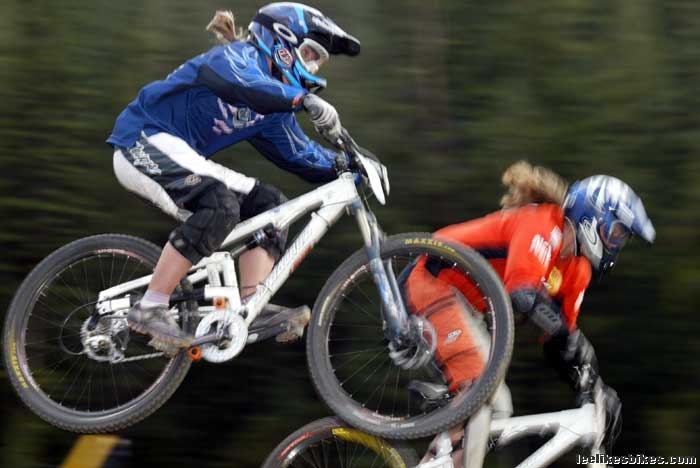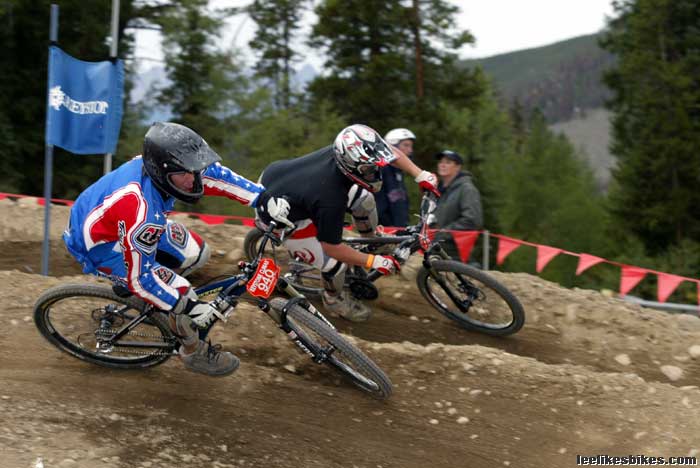How does dual slalom racing work?
Now that dual slalom is making a comeback, some of you newbies have been asking how it works. Well, here you go.
 Bobbi Watt and Michelle Dumaresq at last year’s Keystone final. |
The course
Two parallel lanes, typically with berms, flat turns, jumps and rollers. Most runs take 25-40 seconds.
Qualifying
You take one run on each course (the courses are usually called Blue and Red). Your times are combined, and you’re ranked in your class. Depending on the size of the class, the race promoter might qualify 4, 8, 16, 32 or even 64 riders.
Racing
Riders are placed in brackets. The first qualifier against the last, the second qualifier against the second last, and so on. In a group of eight, the first round looks like:
1 vs. 8
2 vs. 7
3 vs. 6
4 vs. 5
You really want to qualify on the top half, so you face someone who’s slower than you. Last year at Keystone I qualified 31st, and I faced No. 2 Luke Strom in the first round. Game over. Thanks for playing. They went on to the round of 16, and I watched.
 Joey and Billy, 2005 Keystone Climax. |
You race against your bracket partner. When the first rider crosses the line, the clock starts. When the second rider crosses the line, the clock stops, giving an advantage of, say, 0.5 seconds to the first rider. Both riders go back to the top and take another run, this time on the opposite lane. If the second rider wins this run by more than 0.5 second, he advances. If not, game over. Thanks for playing.
Most races have a maximum differential, usually 1.5 seconds. So if you totally blow it but still make it down the the course, you have a maximum disadvantage of 1.5 seconds. You can fully crash in the first round, and if you beat the other racer by more than 1.5 in the second round, you still win.
TIP: At some races, the faster qualifier gets the first lane choice. Pick the slower lane. That way, if you suck in the first run you have a slight advantage in the second.
The second round pits the winners of the first round against each other. The fastest qualifiers typically win. In that case, the second round looks like:
1 vs. 4
2 vs. 3
The winners of this round face in the final. The losers race for 3rd and 4th.
But there are no losers. Everyone’s a winner (in his or her special way).

Comments are closed.